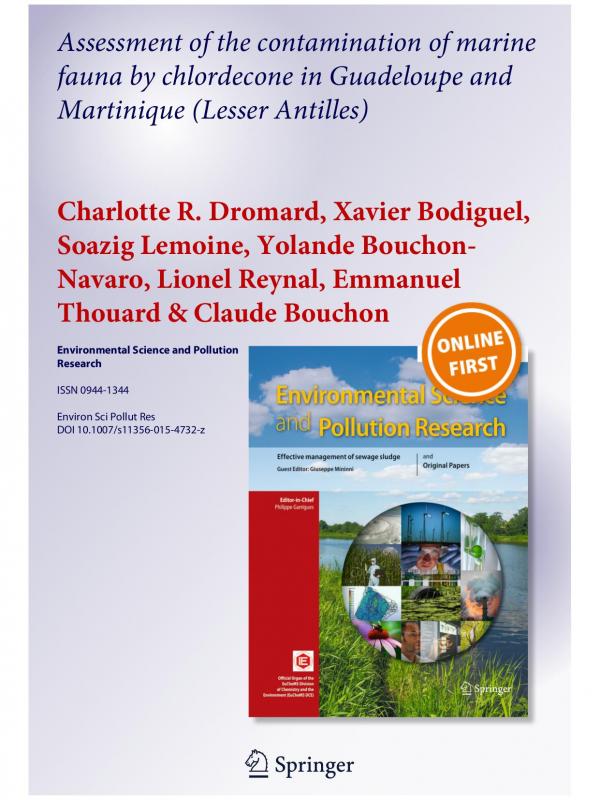
Chlordécone is an organochlorine pesticide, used in the Lesser Antilles from 1972 to 1993 to fight against a banana weevil. That molecule is very persistent in the natural environment and ends up in the sea with runoff waters. From 2003 to 2013, seven campaigns of samplings have been conducted to evaluate the level of contamination of fish, crustaceans, and mollusks. The present study is the first assessment and the first comparison of the concentrations of chlordecone between marine areas, taxonomic groups, and ecological factors like trophic groups or preferential habitat of fish species. The four most contaminated marine areas are located downstream the contaminated rivers and banana plantations. Crustaceans seemed to be more sensitive to the contamination than fish or mollusks. Finally, when comparing contamination of fish according to their ecology, we found that fish usually living at the border of mangrove and presenting detritivores-omnivores diets were the most contaminated by chlordecone. These results are particularly useful to protect the health of the local population by controlling the fishing and the commercialization of seafood products, potentially contaminated by chlordecone.